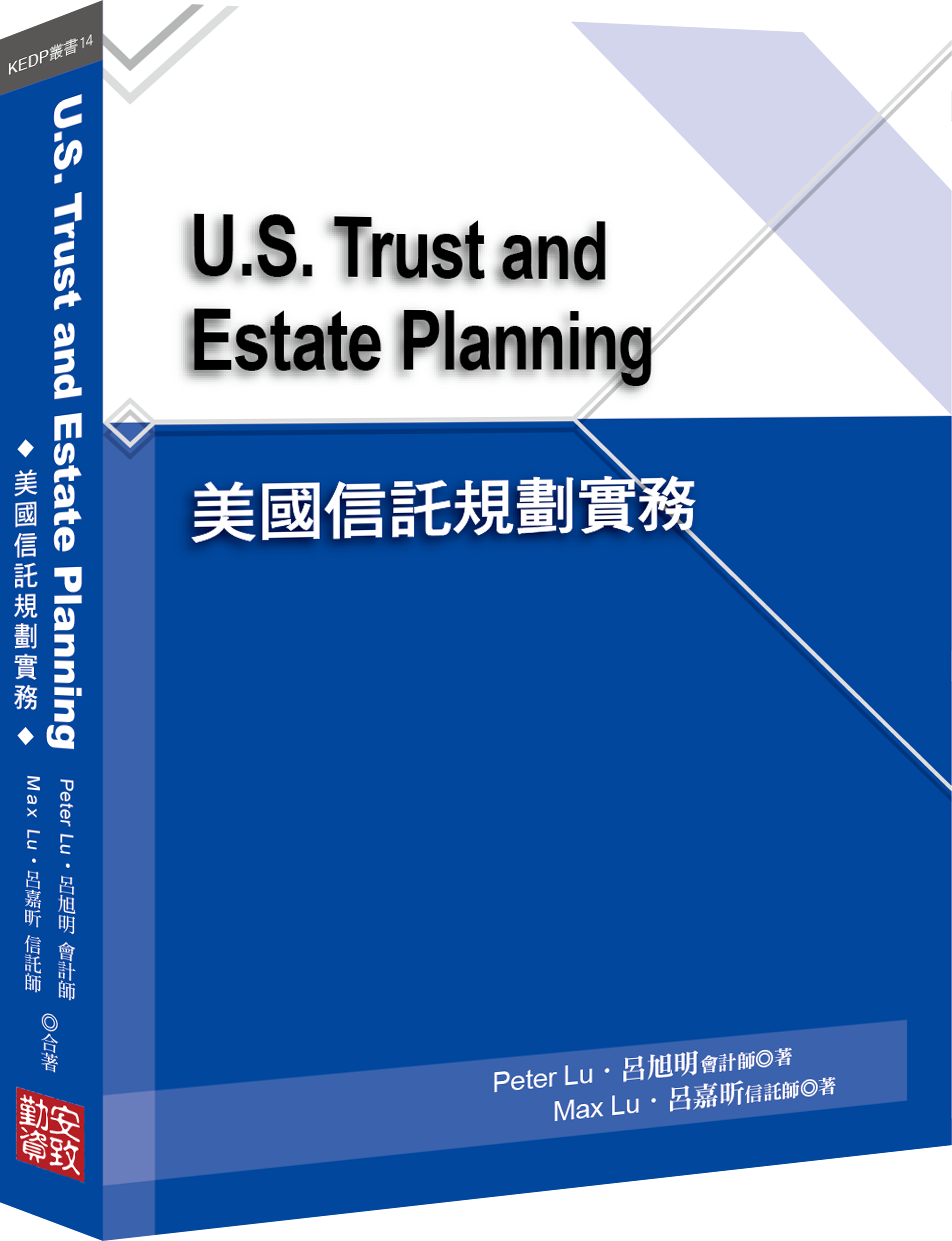专业丛书
依文章标籤分类搜寻

U.S. Trust and Estate Planning 美國信託規劃實務(中文部分)
在財富跨境轉移的時代潮流下,傳承籌劃不再是紙上理論;不再是統一模版,而是講求操作步驟與細節,以因應躲藏於規劃細節中的各種風險。在規劃財富跨境傳承的同時,更應謹慎依照各家族之特殊文化背景及傳承需求,提出具體可行的實際操作方案。
這些操作方案包括:確認傳承願景、成立或委外家族辦公室、草擬與通過家族憲法、制定跨境財富傳承轉移方案、確認實際操作時間表等;由專案人士跟催案件執行進度,並在執行過程中記錄與預估可能產生之稅務及法律風險,備妥相關方案與支持文件以應不時之需。任何跨境傳承籌劃都因地域、國別、稅務、法律的不同,而有一定風險;如何因應、突破及避免,籌劃工作者和當事人之間須建立起一定的默契和信賴感,籌劃工作者沒有具體操作經驗切不可貿然進行。
本書作者參與各家族之跨境傳承籌劃,其中各種籌劃工具皆透過自身家族先行進行操作,以美國信託成立為例,作者在過去十年當中尋求與拜訪美國信託律師、稅務律師、會計師、受託公司等專業人士多達數百位,多方參酌美國本地專業人士的經驗和意見,以確認所有操作執行細節及稅務和法律風險,務求籌劃工具能收到一定成效,也更能符合高資產家族之傳承需求!
這些操作方案包括:確認傳承願景、成立或委外家族辦公室、草擬與通過家族憲法、制定跨境財富傳承轉移方案、確認實際操作時間表等;由專案人士跟催案件執行進度,並在執行過程中記錄與預估可能產生之稅務及法律風險,備妥相關方案與支持文件以應不時之需。任何跨境傳承籌劃都因地域、國別、稅務、法律的不同,而有一定風險;如何因應、突破及避免,籌劃工作者和當事人之間須建立起一定的默契和信賴感,籌劃工作者沒有具體操作經驗切不可貿然進行。
本書作者參與各家族之跨境傳承籌劃,其中各種籌劃工具皆透過自身家族先行進行操作,以美國信託成立為例,作者在過去十年當中尋求與拜訪美國信託律師、稅務律師、會計師、受託公司等專業人士多達數百位,多方參酌美國本地專業人士的經驗和意見,以確認所有操作執行細節及稅務和法律風險,務求籌劃工具能收到一定成效,也更能符合高資產家族之傳承需求!
傳承規劃是指個人在世時就其資產的管理及處分進行預測及安排的過程,為其將來可能喪失行為能力或過世作準備。雖然傳承表面上看似簡單,但許多人卻因各種緣由在傳承規劃時備感艱難,對於那些已積累大量財富的人士(本書簡稱其為「創富者」)來說尤其如此。
對於成員位於多個司法管轄區的家族(通常稱為「跨境家族」),傳承規劃可能更加艱巨。本書旨在為家族成員及資產分布於多國之創富者提供可行的解決方案。
對於成員位於多個司法管轄區的家族(通常稱為「跨境家族」),傳承規劃可能更加艱巨。本書旨在為家族成員及資產分布於多國之創富者提供可行的解決方案。
朝代信託(Dynasty Trust)是以財富傳承到下一代或多個世代為主要目的的信託。不可撤銷的朝代信託是指,委託人一旦贈與資產給信託,委託人即無法任意將該資產分配回給委託人。該資產將在委託人所指派的受託責任人的控制下為信託受益人(通常是委託人在美國的後代或親屬)之利益進行保護及管理。
根據定義,可撤銷信託是委託人保留撤銷信託並收回信託所持有資產權利的信託。雖然可撤銷信託有多種形式,本章主要關注在由非美國委託人設立的可撤銷信託。
本書的前半章節主要關注如何使用美國朝代信託,本章則聚焦於跨境家族及在其控制下之實體的各種稅務申報義務,更具體來說,本書將簡要闡述筆者認為與跨境家族有關的各種稅務表格。
家族辦公室是由個人或家族所設立的私人財富管理顧問公司。有別於傳統的財富管理,家族辦公室為高淨值的個人或家族提供全面性的資產管理規劃及多種私人及財務服務。

